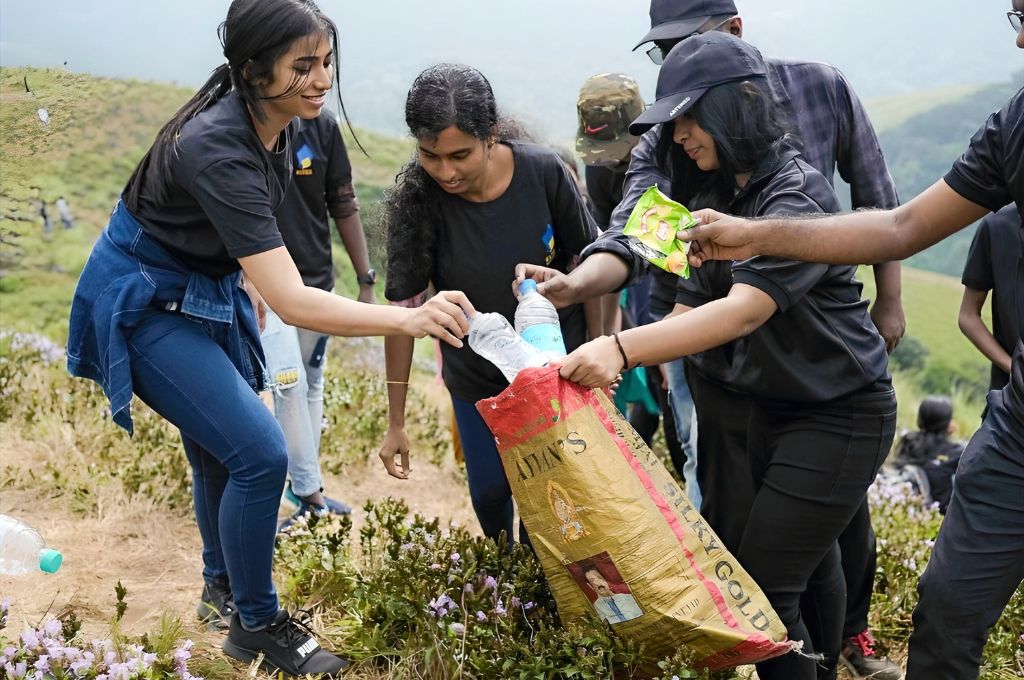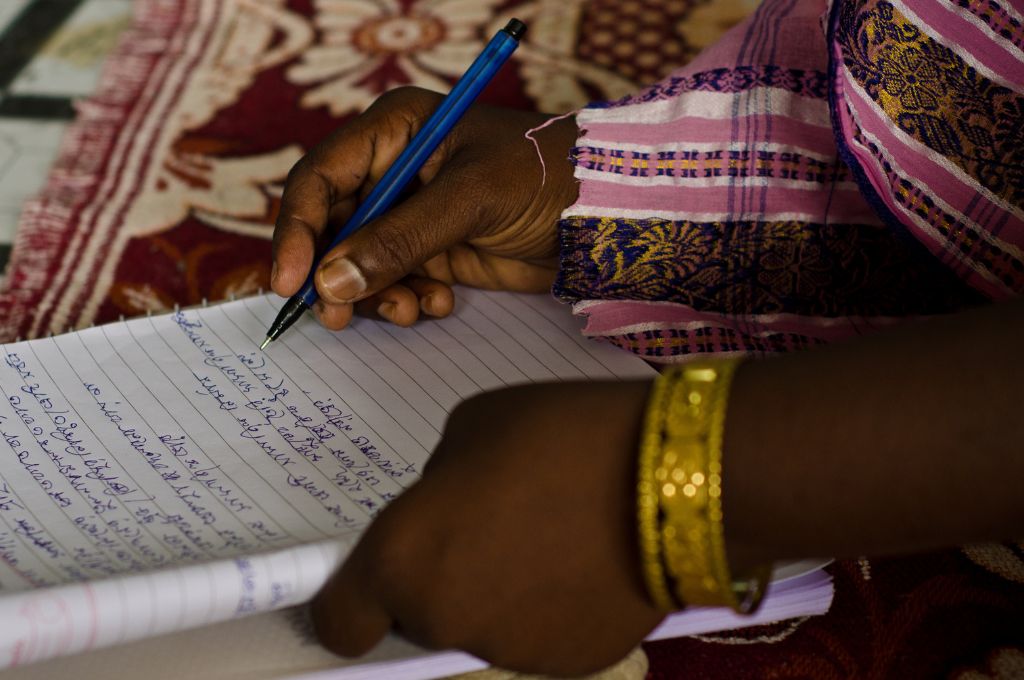Volunteering has a rich history in India that dates back centuries, and its nature and purpose have evolved over time. The concepts of seva (selfless service) and dharma (duty) are central to many religious and philosophical traditions in India. Movements in pre- and post-Independence India have relied on volunteers. Volunteers have also played a role in various women’s movements in independent India. However, in recent years, volunteering came to be viewed as an activity that young people only engage in to accumulate certificates to secure admissions into prestigious institutions.
Now, however, a transformative shift is underway. Long-standing perceptions of volunteering as a certificate-centric activity or something reserved for those with abundant free time are fading. Young volunteers from schools and colleges are no longer content with being passive participants; they seek meaningful involvement where they can influence the direction of initiatives. This change in mindset has led to an environment where volunteers actively contribute to programme design, operations, and decision-making.
eivolve.org is an incubator for start-ups that primarily work with volunteers to drive social change. It was initiated by India Welfare Trust in 2022. Since then, it has incubated 14 entrepreneurs. Given our work, we have witnessed this transformation first-hand. Below, I outline emergent trends, approaches, and lessons in volunteering to help develop the robust volunteering ecosystem that the social sector deserves.
Trends shaping the volunteering landscape
1. Volunteering is central to many organisations’ work
Newer organisations are pioneering a paradigm shift in how volunteering is perceived and leveraged. Some are pivoting from being staff-driven organisations to volunteer-driven ones. For instance, Captains Social Foundation has harnessed the energy of volunteers to lead impactful projects. In a project for which they partnered with the Kerala Tourism Department, they mobilised volunteers to paint villages with images rooted in the villages’ histories and traditions.
Similarly, Kites Foundation encourages young volunteers to take charge by championing and leading projects themselves, thus fostering a sense of ownership and agency. In 2022, Kites incubated 23 successful volunteer-led initiatives under The Future Project. These initiatives include distributing 10,000 seed packets to farmers across several districts in Kerala to improve food security, cleaning beaches in Kerala’s Alappuzha district, and providing first-aid training and awareness sessions to the public, especially the youth.

2. The volunteer pool is diverse
Organisations are engaging a diverse pool of volunteers—from high school students to young corporate professionals—who are not only offering their time but also engaging in leadership activities.
Retired professionals and homemakers are other groups of volunteers who are both eager to engage in volunteer work and have the ability to spend more time and effort on their chosen cause. They make up a significant portion of the volunteer pool and are an asset to organisations today. Angel Xpress Foundation is an organisation that successfully engages a lot of volunteers from this demographic. Their volunteers contribute two–three hours a week to teach first-generation learners from underprivileged communities.
However, homemakers and retired professionals still represent an underutilised demographic in volunteering.
3. There is a shift towards skill-based volunteering
Traditional volunteering often involves generic tasks such as distributing pamphlets or simple administrative work, but there’s a growing trend of skill-based volunteering, where individuals contribute their specialised skills and expertise, such as building strategy for organisations, designing marketing plans, onboarding new technology platforms, and training community members in a specific skill. This can be highly beneficial for organisations seeking specific knowledge or services.
Taproot Foundation and WeDoGood connect skilled professionals such as marketers, HR experts, and graphic designers with nonprofits that need their expertise. Volunteers provide pro bono consulting to help these organisations achieve their missions more effectively.
4. Virtual volunteering is taking off, especially after COVID-19
The pandemic accelerated the adoption of virtual volunteering, allowing individuals to contribute remotely. This trend continues as people realise they can make a difference from the comfort of their homes. For instance, iVolunteer, an online platform, offers virtual volunteering opportunities in areas such as content writing, website development, and data analysis. Volunteers can help nonprofits across India without facing any geographical constraints.
These trends are indicative of the changing landscape of volunteering and the growing importance of volunteers in society.
Evidence of effective volunteering
Among the strategies that have proven successful, providing opportunities for volunteers to lead and shape projects has been transformative. Organisations such as Claylab Education Foundation have embraced the concept of ‘super mentors’—experienced volunteers who have been working consistently with the organisation for a while. Involving long-term volunteers in programme design and operations enriches both their experience as well as programme outcomes.
Initiatives such as Sampark Sathi Foundation allow volunteers to witness the immediate impact of their efforts. Community volunteers at Sampark Sathi scout cases in the local community that require attention. Once regular volunteers have verified these cases, they go about looking for solutions with partner nonprofits. Recently, some volunteer members arranged for a wheelchair for a young boy and helped conduct workshops for young women to become certified beauticians. This reinforces their connection with the cause.
Virtual opportunities and the emergence of ‘gig’ volunteering are further testament to the evolving dynamics. It enables volunteers to engage in micro-projects with tangible results within shorter time frames (one–three months).
What we’ve learned
While the potential for impactful volunteering is immense, organisations must consider the following to effectively harness this potential:
- Insisting on long-term commitments before volunteers experience the ‘joy’ of volunteering can deter potential contributors. We live in a world of instant gratification, so it’s important to design short-term opportunities, including ‘gig’ opportunities that can be completed in as little as one week and display immediate impact to some extent. This helps keep volunteers engaged and motivated as they start out.
- Volunteering can help reduce costs, which can make a significant difference for organisations that aren’t well resourced. For instance, the cost per hour of teaching is considerably lower for volunteers when compared to hiring paid staff. It cost Santhusta Foundation approximately INR 45 per hour to deploy volunteer teachers in 2022–23. However, hiring a paid teacher would cost them INR 250–300 per hour.
- Volunteer engagement can also serve as a substantial source of fundraising for organisations, as demonstrated by the success of Claylab Foundation, Team Everest, Bhumi, U&I, and Make A Difference. These organisations raise more than 20–50 percent of their operational expenses through volunteers. This is because having participated in organisational building, volunteers develop a strong sense of ownership and often become advocates for the cause. Many become retail funders for long periods of time and inspire their own networks to fund these organisations.
- Creating a separate department for volunteering outside of HR, hiring a full-time volunteer manager, and integrating volunteering into core programme strategy are effective ways through which organisations have been able to meaningfully engage volunteers and drive impact.
- It is vital to involve volunteers in designing, leading, planning, and decision-making, and treat them as valued members of the team rather than as spare pairs of hands.
Supporting the volunteer ecosystem
Creating a supportive environment for volunteering requires collaboration and commitment from multiple stakeholders. Corporate social responsibility (CSR) initiatives can align projects with employee engagement, leading to improved retention, skill development, and overall well-being, as evidenced by several studies.
Funders have a role to play in encouraging organisations to invest in volunteer management capacity. This includes funding full-time volunteer managers, training and development, technology tools, marketing, and process development to engage volunteers more meaningfully and at scale.
As volunteering continues to evolve and grow, larger institutional funders must help build a robust volunteering infrastructure. Key infrastructural requirements include creating and certifying a cadre of volunteer managers, building consulting capacity to help organisations design effective volunteer strategies and integrate them into their overall programme and strategies, creating ‘volunteer pipelines’ by demographic, and supporting targeted initiatives that work with schools, colleges, corporates, seniors, and homemakers.
By supporting young volunteering organisations, aligning stakeholders, and fostering a culture of purposeful engagement, we can collectively create a future where volunteering plays a central role in shaping a more inclusive and compassionate society.
—
Know more
- Read this report on the state of corporate volunteering in India.
- Read this article on getting volunteer engagement right.





